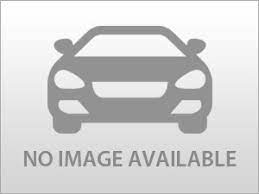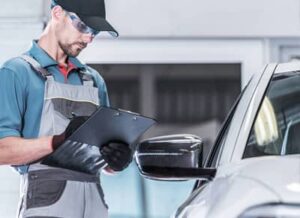Navigating the complex rules to qualify for a used EV tax credit in 2025 can be a daunting task. Many potential buyers find themselves frustrated and overwhelmed by the unclear guidelines, ultimately missing out on valuable financial incentives.
It’s even more so nowadays because the constantly changing regulations and a lack of straightforward information. But there’s good news – with the right guidance, you can confidently maneuver through the confusion and secure your used EV tax credit.
In this article, we’ll break down the eligibility criteria, offering a clear roadmap to help you take full advantage of these savings opportunities.
Who Qualifies for the Clean EV Tax Credit?
The Inflation Reduction Act offers a tax credit for qualified, used, clean vehicles, potentially leading to significant savings. This is an excellent opportunity if you’re considering buying a used electric car, plug-in hybrid, or fuel-cell vehicle. Below are some of the significant requirements,
Key Requirements:
- Taxpayer Income: Must be below $150,000 for joint filers, $112,500 for head of household, or $75,000 for others (based on modified adjusted gross income).
- Vehicle Eligibility: The vehicle must be at least two years older than the purchase year, have a sale price of $25,000 or less, and be sold by a licensed dealer. It must also be the first transfer of the vehicle since August 16, 2022.
- Additional Points: The credit is worth 30% of the sale price, capped at $4,000. You can find a list of eligible vehicles on FuelEconomy.gov and consult a tax advisor if unsure about qualification.
The above paragraphs summarize the official government document on used vehicle tax credits.
Benefits of Clean Vehicle Tax Credit
The tax credit significantly lowers the upfront cost of buying a new or used clean vehicle, making it more affordable for consumers. This can help to overcome what is often cited as a significant barrier to EV adoption.
The tax credit also encourages people to switch from gasoline-powered vehicles to cleaner alternatives, reducing greenhouse gas emissions and air pollution. This can lead to a cleaner environment and improved public health.
Transportation is a significant source of oil dependence in many countries. The Clean Vehicle Tax Credit promotes using electric vehicles, which can be powered by renewable energy sources, helping to reduce reliance on foreign oil.
The growing demand for clean vehicles can lead to job creation in the clean energy sector, including manufacturing, installing, and maintaining electric cars and charging infrastructure.
Understanding the Financial Incentives for Clean Vehicles
The Clean Vehicle Tax Credit provides financial incentives for purchasing new and used clean vehicles. The credit’s specific amount varies depending on the type of vehicle and the purchaser’s income.
| New Clean Vehicles | Used Clean Vehicles |
| The credit can be up to $7,500 for new clean cars based on the vehicle’s battery capacity. | The credit for used clean vehicles is smaller than for new cars. It is equal to 30% of the vehicle’s sale price, up to a maximum credit of $4,000. However, income limitations exist for eligibility for the credit for a used clean vehicle. |
Comparing Different Types of Clean Vehicle Credits
Different types of Clean Vehicle Tax Credits are available depending on the type of vehicle and your location. Here’s a brief comparison of some of the most common ones:
- Federal Tax Credit: The federal Clean Vehicle Tax Credit is available for the purchase of new and used clean vehicles. The amount of the credit varies depending on the type of vehicle and the purchaser’s income.
- State Tax Credits: Many states offer tax credits for purchasing clean vehicles. These credits can vary significantly from state to state in terms of amount, eligibility, and types of cars that qualify.
- Local Tax Credits: Some local governments also offer tax credits to purchase clean vehicles. These credits are typically smaller than federal or state tax credits but can still add to significant savings.
Impact of Tax Credits on Clean Vehicle Sales
The Clean Vehicle Tax Credit has positively impacted clean vehicle sales. Studies have shown that the credit has led to an increase in the purchase of electric and other clean vehicles. The tax credit has also helped to make clean vehicles more affordable for a broader range of consumers.
However, the impact of tax credits is limited by factors such as the availability of clean vehicles, charging infrastructure, and consumer awareness. As these factors continue to improve, the Clean Vehicle Tax Credit is expected to play an even more significant role in promoting the adoption of clean vehicles.
How to Know a Clean Vehicle
In this context, “clean” does not only mean environmentally friendly vehicles. A clean car can also means that it has not been involved in any auto incident or crash.
One of the easiest ways to determine a clean used vehicle is to check the vehicle history report, which usually details information about the vehicle’s past.
The information provided includes title information. Under the title information section, the vehicle’s current title will be printed. A vehicle could have several titles, including salvage or clean. This article provides more information on the various car titles.
The best way to determine if a car has title issues is to run a VIN check; InstantVINReports provides this service, making it possible to find problems associated with any vehicle.
The reports provided herein are detailed. Not only do they provide title information, but they also offer information about accidents, loans/liens, recalls, auction/sales information, odometer fraud, and more.
You can view a sample vehicle history before proceeding, and here are sample vehicle history reports that you can explore.










